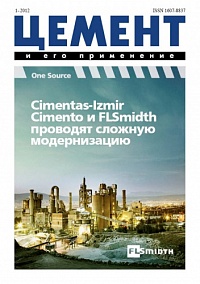The use of hard coal fly ash (Class F fly ash) as a main constituent of cementitious systems is becoming increasingly more attractive. The use of fly ash as a supplementary cementitious material saves primary raw materials and fuels and reduces the CO2 emissions...
Mineral solids in the form of fly ash and bottom ash are produced by burning municipal solid wastes in incinerators (MSWI). Fly ash is negligible and it is so chloride-rich that it cannot be used as mineral addition in cement-based mixtures for reinforced concre...
In the worldwide practice of precast concrete industry, there is a trend to reduce the temperature of isothermal heating during concrete steam curing, which is associated not only with energy saving during steam curing, but also with the requirements to enhance the conc...
Evonik Fibres GmbH, Austria, reports on experience with needle felts from P84 and P84 blends in cement applications.
Fire and explosion protection equipment by Rembe GmbH Safety + Control (Germany), including explosion panels/quench valves, flame and dust delay safety devices and the explosion containment systems are described. The company’s products are widely used in the...





